Text
Happy fall, and happy Libra season! 🍂♎️
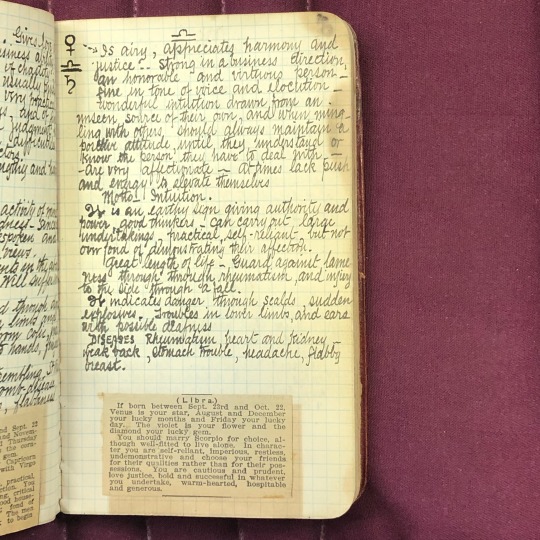
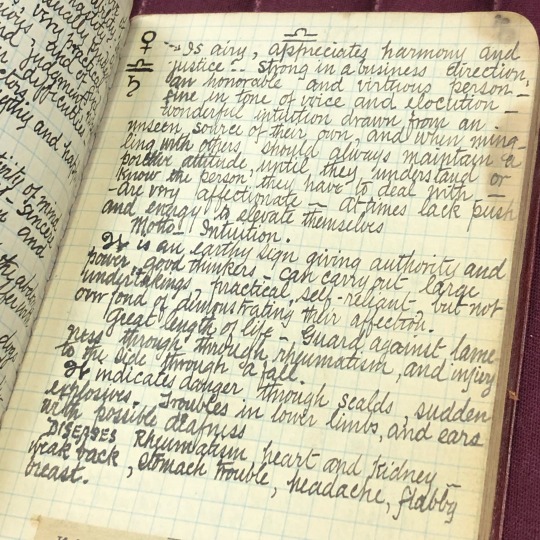

Transcript:
“[libra] is airy, appreciates harmony and justice.. strong in a business direction, an honorable and virtuous person_ fine in tone of voice and elocution_ wonderful intuition drawn from an unseen source of their own, and when mingling with others should always maintain a positive attitude, unless they understand or know the person they have to deal with. _ are very affectionate_ at times lack push and energy to elevate themselves motto_ Intuition. [capricorn?] is an earthy sign giving authority and power, good thinkers_ can carry out large undertakings, practical, self-reliant, but not over fond of demonstrating their affection. [capricorn?] indicates danger through scalds, sudden explosives. Troubles in lower limbs, and ears with possible deafness. DISEASES Rheumatism, heart and kidney_ weak back, stomach trouble, headache, flabby breast. (Libra) If born between Sept. 23rd and Oct. 22, Venus is your star, August and December your lucky months and Friday your lucky day. The violet is your flower and the diamond your lucky gem. You should marry Scorpio for choice, although well-fitted to live alone. In character you are self-reliant, imperious, restless, undemonstrative and choose your friends for their qualities rather than for their possessions. You are cautious and prudent, love justice, bold and successful in whatever you undertake, warm-hearted, hospitable and generous.”
[Cairns. Manuscript. Anonymous. Astrology notebook. (between 1900-1909.)]
https://www.instagram.com/p/CULZ4agrtKn/?utm_medium=tumblr
8 notes
·
View notes
Text

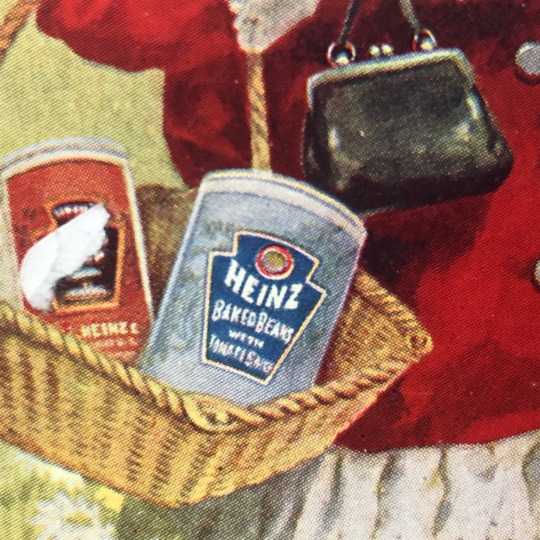

Apparently today is National Beans ‘n’ Franks Day? 🌭 The first canned baked beans were manufactured by Heinz in the late 19th century, and advertised by postcards like this one!
We’re not sure when this became a holiday, or when people started putting hot dogs in their baked beans. Lots of our 19th-century cookbooks have recipes for baked beans, many of which call for “salt pork.” This has long been a traditional dish in New England (hence “Boston baked beans”). The dish was actually invented by Indigenous groups in what is now New England, including the Iroquois and Narragansett.
Still not sure when hot dogs came into play. Food historians, feel free to weigh in!
[Cairns HF 5827.93 G55 1870. A glimpse at 19th and early 20th century mother’s helpers through advertising ephemera. 1870-1920. Folder 1, “convenience food.”]
50 notes
·
View notes
Text

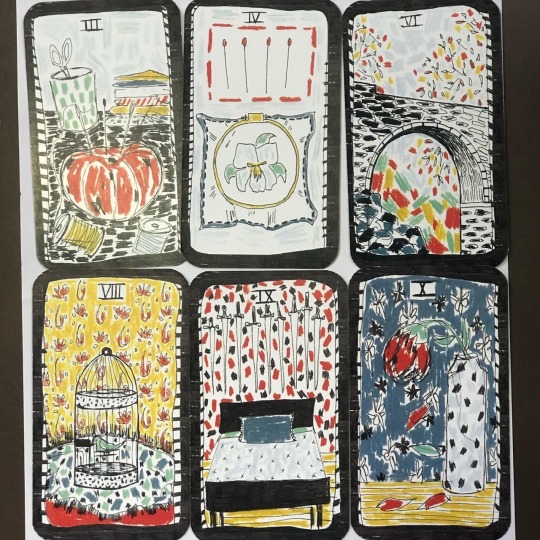

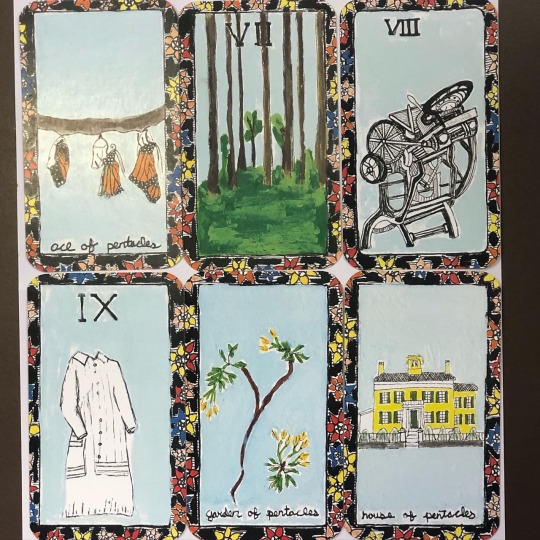

Rounding out #PrideMonth with the Emily Dickinson tarot deck, inspired by the famously reclusive–and probably bisexual/biromantic–poet.
Tarot cards originated as playing cards in Europe (maybe Italy) in the 15th century. It wasn’t until the 18th century that they became associated with divination and the occult. (See @stuffmomnevertoldyou’s episode, “The Art of Tarot,” for more, & to learn about the queer artist who illustrated the famous “Rider-Waite” deck!) We’re not sure if Emily Dickinson ever came across a tarot deck, but she did live in New England at a time when Spiritualism and mediums were very popular, so, maybe? Dickinson scholars, please weigh in– would Emily Dickinson have been into tarot? I can definitely see Alena Smith's version of her (on Apple TV's Dickinson) doing a reading for Sue… 🌈🔮
Artwork by Halie Theoharides, Phoebe Harris, Bianca Stone, Emily Pettit (@goatinthesnow), and Haley Rene Thompson.
[Cairns PS 1541 Z5 E45 2014. The Emily Dickinson Tarot Deck. 2018.]
https://www.instagram.com/p/CQwQ8PLszzN/?utm_medium=tumblr
#tarot#EmilyDickinson#EmilyDickinsonTarot#dickinson#bi#queer#PrideMonth#wlw#lgbtq#SpecialCollections#RareBooks#IG_libraries#UWMadison#tumblarians#cairns collection of american women writers
37 notes
·
View notes
Text
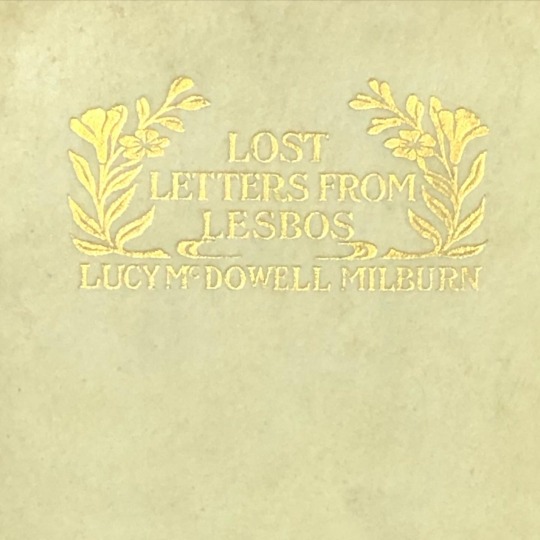

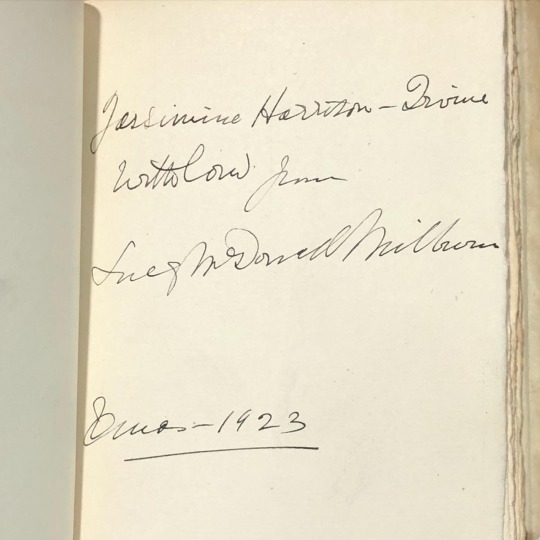

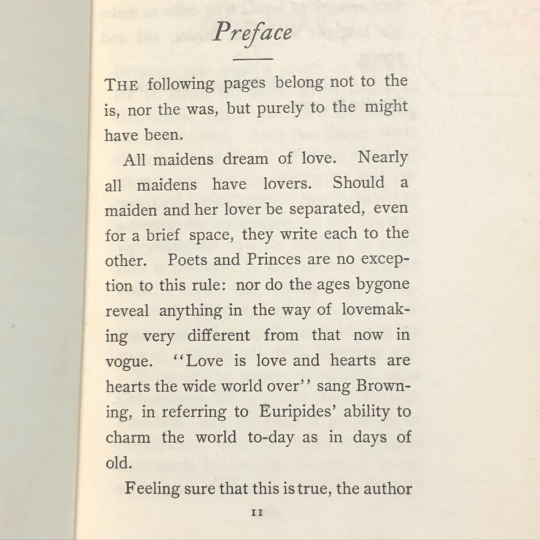
“Lost Letters from Lesbos” is 1902 fanfic in which newly-discovered letters by Sappho are published. These love letters are purportedly addressed to a man. But! The Victorian era is when “lesbian” and “sapphist” were first commonly used to refer to women who loved other women. We can’t possibly know how Lucy McDowell Milburn would have identified if she were alive in 2021, but when she wrote this in 1902, she was probably aware of Sappho’s homoerotic/homoromantic reputation. So, keeping historical context in mind, we can draw our own conclusions from the text and paratext.
Further reading:
Faderman, Lillian. Surpassing the Love of Men. 2001. (Book)
“The Fascinating History of ‘Lesbian’.” Intomore.com, 2017 (article)
[Cairns. PS 3525 I47 L6 1902. Milburn, Lucy McDowell. Lost Letters from Lesbos. Chicago, 1902.]
https://www.instagram.com/p/CQjc88WMExm/?utm_medium=tumblr
6/25/2021
-Samantha (graduate student employee)
#sapphic#wlw#pridemonth#lgbtq#poetry#victorian#edwardian#oldbooks#specialcollections#cairnscollectionofamericanwomenwriters#loveislove#heartsarehearts
32 notes
·
View notes
Text



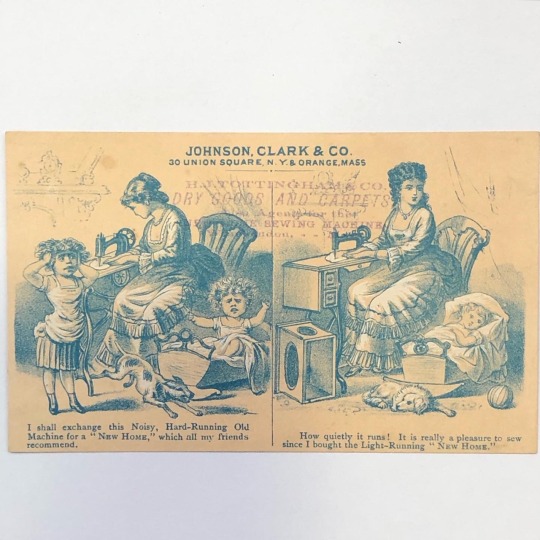


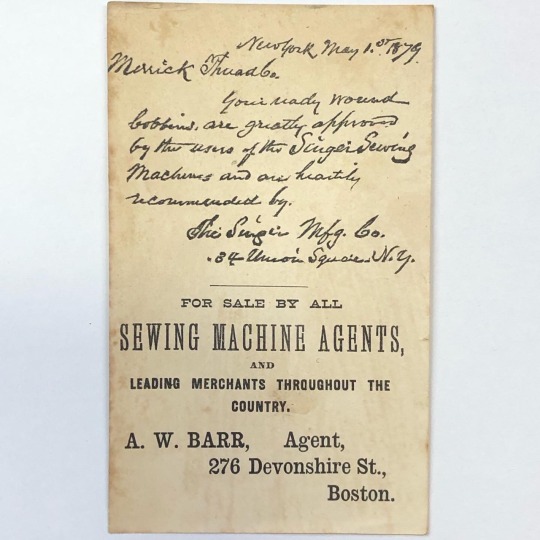


Can you believe how vivid this pink is?! 😍💖🌷 All of these late-19th-century sewing machine advertisements are obsession-worthy (love the details in image 3 & the cat in image 6), but that first pink and gold chromolithograph really steals the show. 🤩 Which is your favorite?? Image 1: cards depicting an advertisement for the “new American” sewing machine, with different inks Image 2: back of the first two cards Image 3: ad for White Sewing Machine Co. Image 4: another ad for White Sewing Machine Co. Image 5: ad for Johnson & Clark co.’s “New Home” sewing machine Image 6: ad for ready-wound bobbins Image 7: back of card from image 6 Images 8 and 9: tin of “modern stamping material,” used to transfer patterns to fabric. [Cairns HF 5827.93 G55 1870. A glimpse at 19th and early 20th century mother’s helpers through advertising ephemera. Between 1870-1920. Folder 6A.]
https://www.instagram.com/p/CPYxupCMxCk/?utm_medium=tumblr
#me made may#sewing#vintage#chromolithograph#pink#ephemera#special collections#tumblarians#gibson girl#victorian#edwardian#light academia#aesthetic#uw madison
12 notes
·
View notes
Text
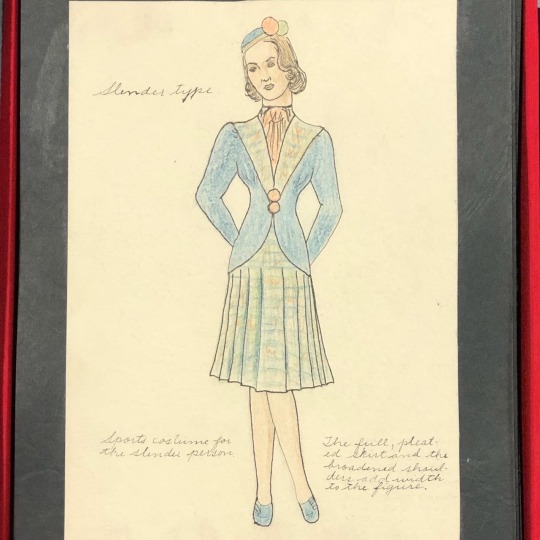
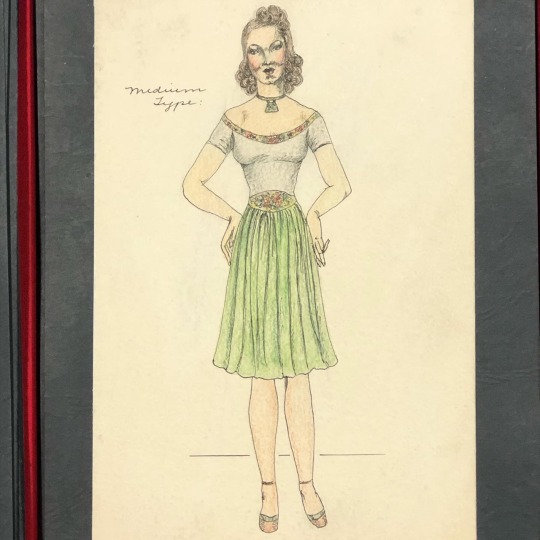
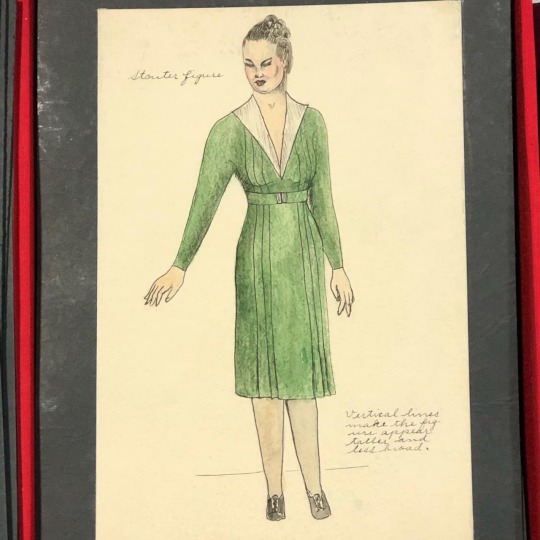



Just getting some #styleinspo from this 1939 portfolio of fashion illustrations. The colors! The details! (Personally, this page admin would wear all of these outfits.)😍 We don’t have any information about the artist, Elaine Redlin. We found a few "Elaine Redlin"-s on Ancestry.com, one of whom was a 16-year-old living in Milwaukee in 1940. Maybe these were drawn by a talented Wisconsin teenager? Maybe as a school project for an art class or for a fashion unit in home ec? Or maybe Elaine Redlin was already a successful fashion designer in 1939, and there just isn’t a record of who she was or where she worked. One of many mysteries here in Special Collections... If anyone has any ideas, do let us know! 🕵️♀️ https://www.instagram.com/p/CNDj22spNac/?utm_medium=tumblr
#vintage#fashion plate#spring fashion#summer fashion#illustration#1940s aesthetic#1930s aesthetic#special collections#tumblarians#fashion history#uw madison#styleinspo#home economics
4 notes
·
View notes
Text




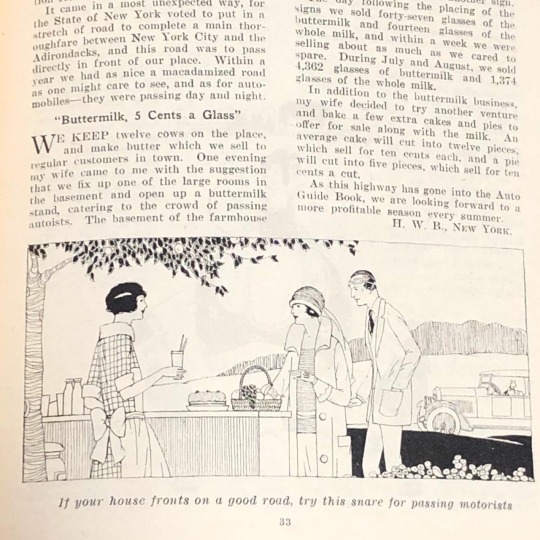

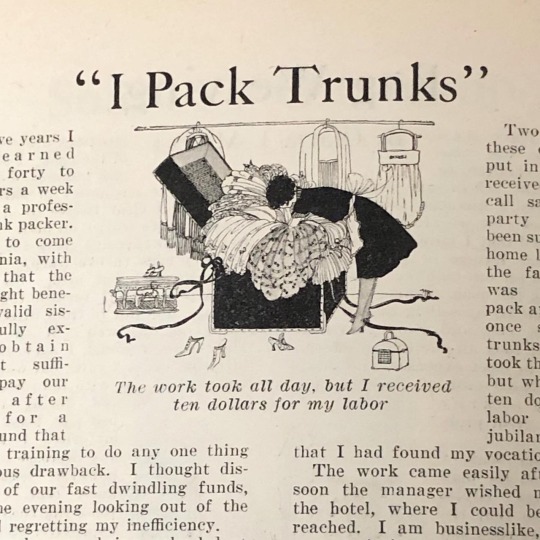


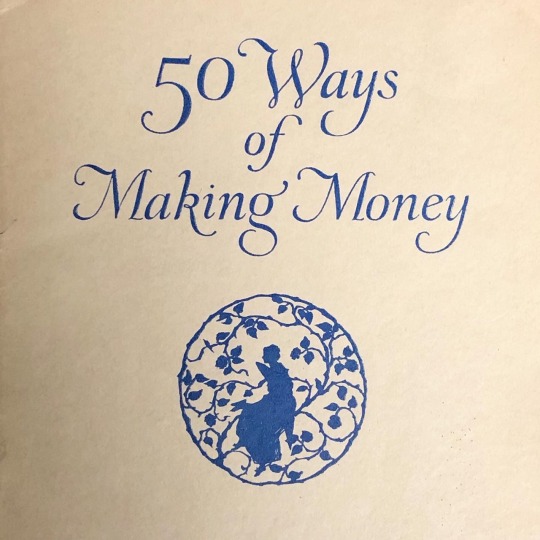
Hoping to earn some “pin money” over summer vacation? This 1923 booklet from The Women’s Home Companion has lots of ideas. 💰 The booklet encourages readers, “If you have a hobby, utilize it. If you have a talent, vitalize it. Go to it and good luck!” It’s divided into 6 parts:
Part I-for the needlewoman
Part II-for the farm-woman or garden-lover
Part III-if you own a car 🚙
Part IV-if you cook 🧁
Part V-if you are clever with your fingers 🧶
Part VI-if you like to use your brains 📝
While some of the suggestions are outdated, quite a few of them could still work! The stories included come from women of a range of ages, socioeconomic status, and dis/ability. This probably reflects the readership of The Woman’s Home Companion, and feels entirely different from the aspirational women’s magazines and DIY blogs we see today! The advice isn’t all that different from what you’d see today, though: the 2021 version of this booklet would probably just be a guide to starting an @etsy shop and navigating gig economy apps like @lyft and @fiverr.
[Cairns HQ 759.46 F54 1923. Fifty ways of making money. New York, 1923.] https://www.instagram.com/p/CO_N4h3JuZ1/?igshid=abjdz9honzsp
#diy#mending#baking#old books#vintage#1920s#etsy#pin money#aesthetic#light academia#summer jobs#gig economy#special collections#cairns collection of american women writers#uw madison
23 notes
·
View notes
Text

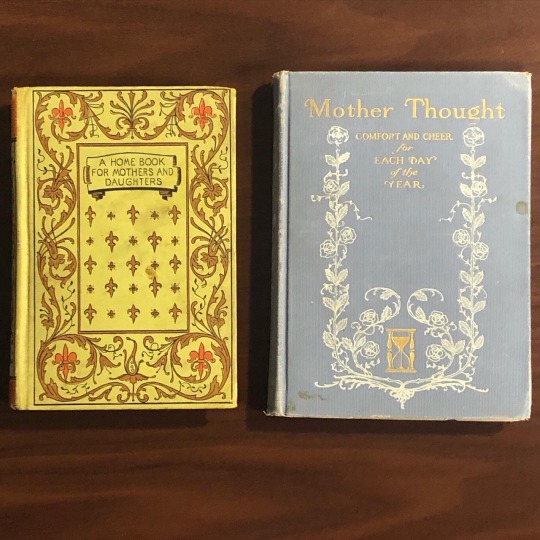
Happy Mother’s Day! 💐 The Cairns Collection of American Women Writers has SO MANY books for mothers. Some consist of practical advice, some of moralizing essays, & some are purely aspirational. Some of the authors were home economists by training; others were children’s book authors. Most of what we have ranges from about the 1840s-1920s. It’s fascinating to see how much changes over that time period, & how much is still the same today!
[Cairns HQ 734 S22 1907. Sangster, Margaret Elizabeth Munson. “The queenly mother in the realm of home.” New York, c1907. Cairns HQ 734 S215 1912. Sangster, Margaret Elizabeth Munson. “The mother book.” Chicago, 1912. Cairns HQ 759 .H6 1897. Herrick, Christine Terhune. “A home book for mothers and daughters.” New York, 1897. Cairns HQ 759 J6 1904. Jordan, Charlotte. “Mother thought.” New York, 1904.]
https://www.instagram.com/p/COtPTluMvOM/?igshid=16ypueu82ohu0
#vintage#old books#mothers day#cairns collection of american women writers#libraries#special collections#uw madison#mommy blogger#home economics#parenting
13 notes
·
View notes
Text
Sagittarius Season
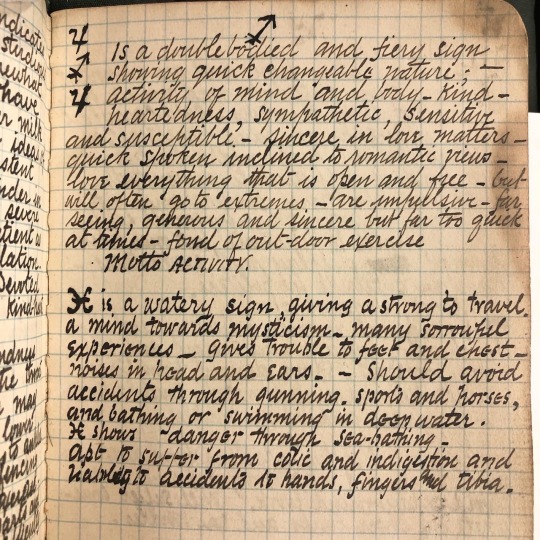
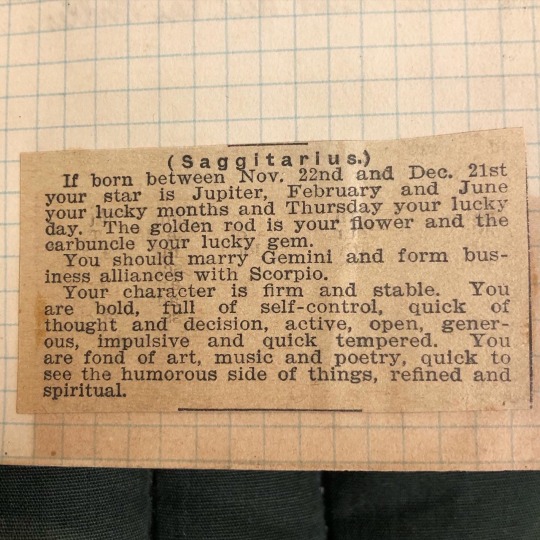
🏹♐️
To celebrate Sagittarius season, we’re sharing a page of an anonymous notebook from our Cairns collection. Several of the diaries and commonplace books in our collection mention astrology, but this one is full of meticulous notes about the signs and planets. Let us know in the comments which signs you’d like to see highlighted!
Call number: Cairns Manuscript. Anonymous. Astrology notebook, c.1900-1910. -Samantha, graduate student employee. December 2020.
Originally posted on our Instagram!
#special collections#Cairns Collection of American Women Writers#sagittarius#manuscripts#diaries#astrology#edwardian#tumblarians#uw-madison
96 notes
·
View notes
Text







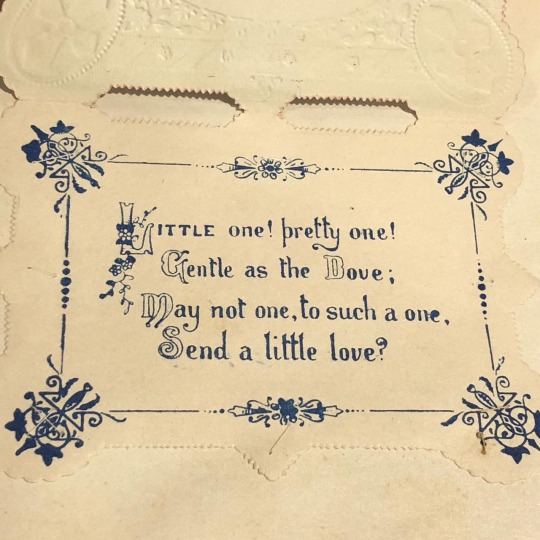
🍂🍁 Flora Lee Leonard started this diary in October 1887, writing letters to her infant daughter Mary (or “Madge”). She also used it as a scrapbook, saving a valentine, a lock of hair, a photograph (probably of the two of them?) and Madge’s handprint. Although Flora wrote entries as letters to Madge, she also wrote that she was unsure if she’d ever show her daughter the book. We wonder if she did?
Call Number:Cairns Manuscript. Leonard, Flora Lee Farnsworth. Journal for Mary Madge Leonard by her mother. 1887-1945
-Samantha, Graduate Student Employee.
October 21, 2020
View on our Instagram!
#special collections#diary#manuscript#ephemera#bookblr#autumn#Cairns Collection of American Women Writers
31 notes
·
View notes
Photo

Working to get out the vote in 1980s New Orleans
This poster was created by the Lesbian and Gay Political Action Caucus (LAGPAC), a group of activists committed to attaining legal and social equality for Louisiana’s gender and sexual minorities.
Shared on the SWH Image Portal by the Louisiana Research Collection, Howard-Tilton Memorial Library, Tulane University http://bit.ly/2zv8QO7
20 notes
·
View notes
Photo

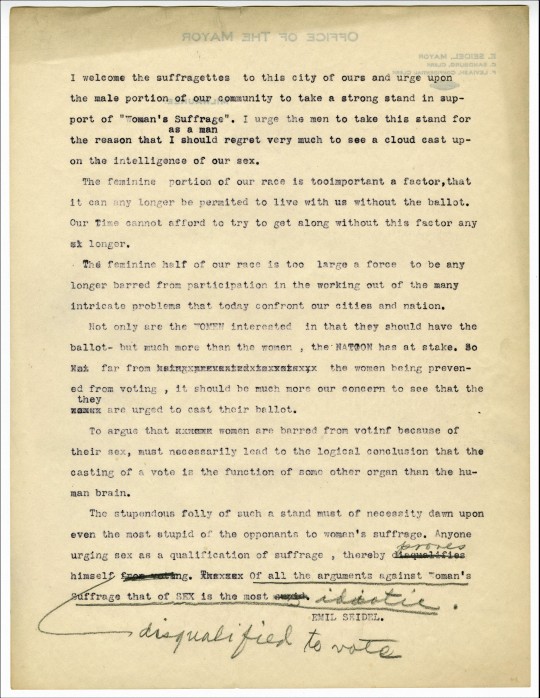


Women’s Suffrage, August 18,1920
Today marks the 100th anniversary of the final ratification of the 19th Amendment giving American women the right to vote. The amendment was passed by Congress on June 4, 1919, and Wisconsin was one of the first states, along with Illinois and Michigan, to ratify the amendment on June 10, 1919, but it wasn’t until August 18,1920 that Tennessee became the final required state to ratify, making universal women’s suffrage the law of the land (the last state to ratify was Mississippi on March 22, 1984!).
Wisconsin has had a progressive streak since its establishment as a state in 1848, and Milwaukee has had a long history of socialism. Emil Seidel was Milwaukee’s first socialist mayor (1910-1912), in fact he was the first socialist mayor of any major American city, and socialist administrations would become a hallmark of the city, on and off, until 1960. The Emil Seidel Papers (1906-1940) are held by our sibling department, the UWM Archives, and they were recently digitized as part of our digital collection, Milwaukee Socialism: The Emil Seidel Era. In the papers is Mayor Seidel’s address welcoming suffragettes to the city in 1910 (above), ten years before the 19th Amendment’s final ratification. In it, the mayor makes no bones about what he thinks of those who oppose universal women’s suffrage:
Keep reading
28 notes
·
View notes
Photo

Woman’s Hour
Not for herself! Though Sweet the air of freedom;
Not for herself! Though dear the newborn power;
But for the Child who needs a nobler Mother,
For the Whole People needing One another,
Comes Woman to her Hour.
Design by Corneille Clarke, Words by Charlotte Perkins Gilman. The female figures hold a caduceus and may represent Iris, the messenger of Hera.
The Nineteenth Amendment became law August 26, 1920.
Equal Suffrage League of Virginia postcard from the Adèle Goodman Clark papers, 1849-1978, James Branch Cabell Library, VCU Libraries
29 notes
·
View notes
Photo
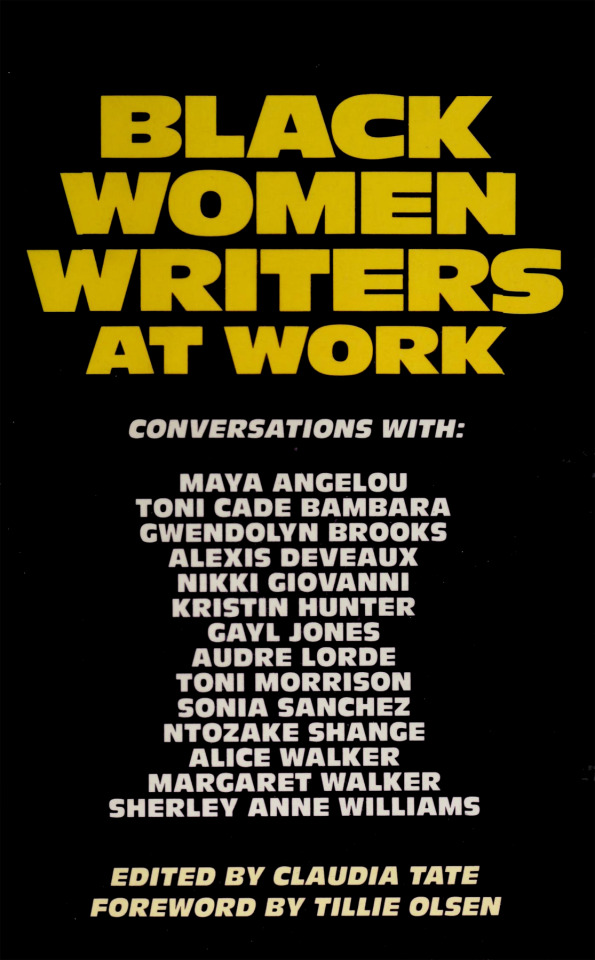



Black Women Writers at Work, (1983), Edited by Claudia Tate, Foreword by Tillie Olsen, Oldcastle Books, Harpenden, 1989. Conversarions with: Maya Angelou, Toni Cade Bambara, Gwendolyn Brooks, Alexis Deveaux, Nikki Giovanni, Kristin Hunter, Gayl Jones, Gayl Jones, Audre Lorde, Toni Morrison, Sonia Sanchez, Ntozake Shange, Alice Walker, Margaret Walker, and Sherley Anne Williams. Cover designed by Alan Forster
#maya angelou#toni cade bambara#gwendolyn brooks#alexis deveaux#nikki giovanni#kristin hunter#gayl jones#audre lorde#toni morrison#sonia sanchez#ntozake shange#alice walker#margaret walker#sherley anne williams
432 notes
·
View notes
Text
“No black woman writer in this culture can write “too much”. Indeed, no woman writer can write “too much”…No woman has ever written enough.”
— from Remembered Rapture: The Writer at Work, by Bell Hooks, born September 9, 1952.
(via universitybookstore)
5K notes
·
View notes
Photo
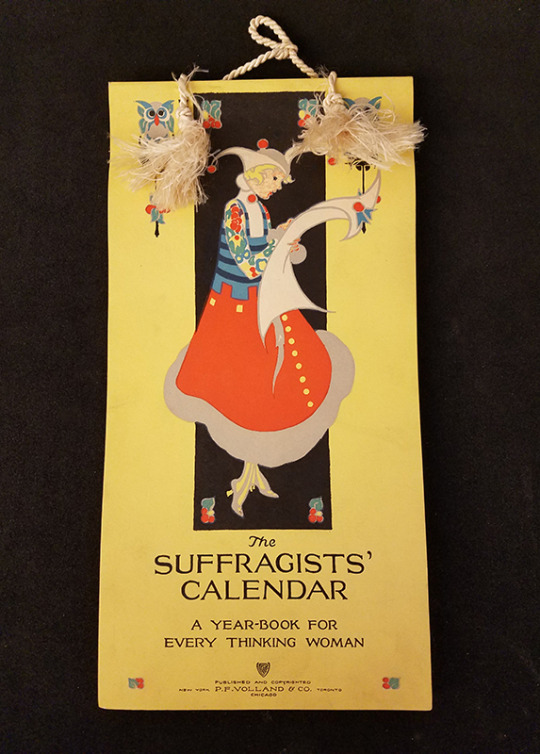

“No Surrender!”
To the American Suffragists there is only one slogan: “No Surrender!” In a womanly and reasonable manner they must fight until votes are granted to their demand, and then show the world what they can do with them. –Amelia E. Barr
33 notes
·
View notes
Photo
August 18th marked the 100 year anniversary of the 19th amendment, which granted (white) women the right to vote in the US.
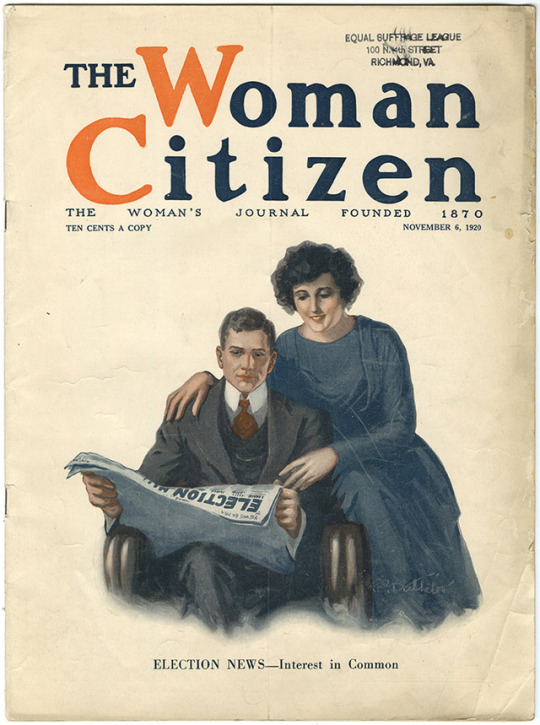
“Election News – Interest in Common”
Cover illustration by C.D. Batchelor from The Woman Citizen, published following the first presidential election in which women could vote.
35 notes
·
View notes